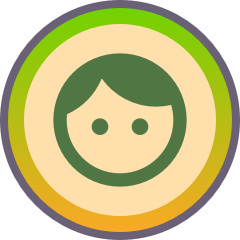We regulate the practice of Orgtology.
What is Orgtology?

Orgtology studies workplace systems and dynamics with the aim to increase performance and ensure relevance. The word is a blend between "organisation" and the Greek word "-logy", meaning the science of organisation. An Orgtologist can help organisations to perform and stay relevant. It holds eight core theories that deal with orgtelligence; work; results; leadership; team dynamics; and intrapersonal wellbeing.
What is Orgamatics?

Orgamatics is an orgtology field of study. Through this, we use scientific method to create strategy and drive operational efficiency. In so, it is key to grasp organisational systems. This includes orgtelligence (systems intelligence & human intellect), work (processes & projects), and results (efficiency & effectiveness). The term blends the words, "organisation" and "mathematics". It denotes the mathematical construct of an organisation.
What is Organamics?

Organamics is an orgtology field of study. In this field, we study the effect that people dynamics have on organisations. People can be abstract, unpredictable, and innovative. In so, they create a dynamic that is hard to grasp. We call this the X-Factor. It creates intrapersonal relations, teamwork, and leadership. These dynamics can change the nature of an organisation. The term blends the words, "organisation" and "dynamics".
Identity
| Term | Definition |
|---|---|
| Identity | Identity is the boundaries that define and differentiate subsystems from one another. In humans, this experience explores all manifesting boundaries such as race, gender, age, physical features, etc. Identity also includes the reference systems or paradigm of a person. In orgtology, we use the term “construct” to describe a paradigm or reference system. This entail the beliefs, attitudes, and values according to which a person views the world and evaluates behaviour ideas and feelings. Worldviews, culture, race as well as individual and collective identity influences our paradigm. There are several types of identity. Every person has a fixed identity, which is hir race, gender, height, facial features, etc. Then there is collective or shared identity. These are the social groups, work place, religion, culture, etc., that a person chooses to belong to. There are also hidden identities. These are things that identifies a person, which ze would prefer to keep to hirself. Examples of this could be sexual preference, life threatening disease, mental disorder, etc.
Hits - 1273
|
Our Featured Blog Articles
The Orgtology Club Leader Board
Our Latest Blog Articles
Orgtology Glossary
The Orgtology Club - Stream
-
Stream item published successfully. Item will now be visible on your stream.
-
Post is under moderationStream item published successfully. Item will now be visible on your stream.
-
Stream item published successfully. Item will now be visible on your stream.
-
Post is under moderationStream item published successfully. Item will now be visible on your stream.
-
Stream item published successfully. Item will now be visible on your stream.






